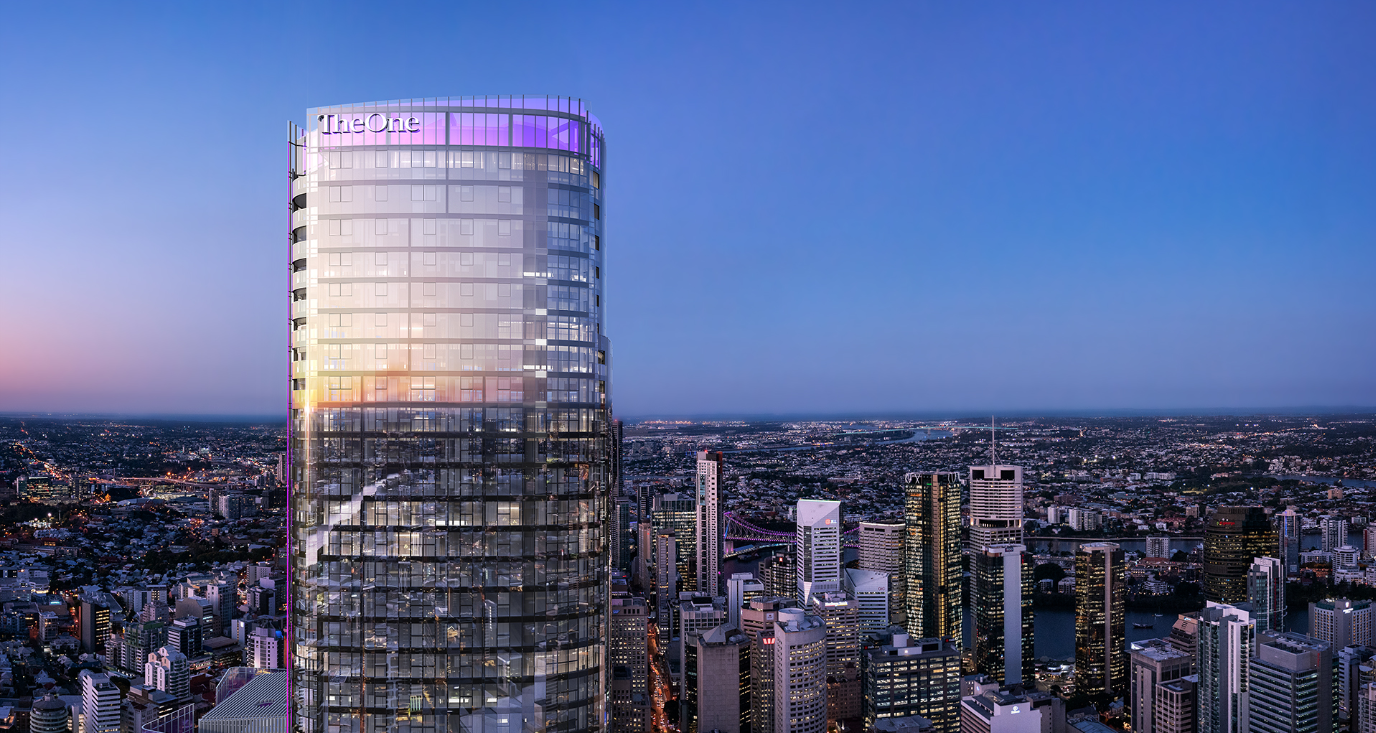

The quest for height has been driving architects and developers since the dawn of cities. Taller, bigger, better has been the mantra for the better part of the last 80 years. In the late 19th century, the phrase ‘skyscraper’ was used to describe any building over ten storeys tall. Now, the cut off to be deemed a skyscraper sits at around 150 metres tall: four times taller than the 1880s. With engineering developments came outstanding feats of height, and now, there are 16 skyscrapers in Brisbane alone.
In 2018, Brisbane was home to three of Australia’s top twenty tallest buildings. Over the next four years, this number is expected to climb significantly higher with a further 18 skyscrapers currently proposed. Set to be completed early this year, the 274 metre Brisbane Skytower will be first to reach the city’s aviation-enforced ceiling and will become the third tallest building in the country. While Q1 will retain the crown for the Sunshine State’s tallest structure (sitting at 322 metres) for the foreseeable future, Brisbane’s skyline is looking up. If Lord Mayor Graham Quirk had his way, the aviation ceiling would be raised to sit at 300 metres: and there are plenty of developers in Brisbane who are keen to rise up to the challenge.

Brisbane’s upward journey began in 1930 with City Hall. A building that is now dwarfed by its 21st-century counterparts along Adelaide Street, once dominated the skyline for 40 years. The reign of City Hall came to an end when the 114.7 metre Westpac Building was completed on Queen Street in 1970. Within the next two decades, the title of “Tallest Building in Brisbane” would be worn by ve different buildings. Over this time, the skyline grew by nearly 85 metres.
It was in 1988 when Central Plaza One took the crown, that Brisbane officially entered the age of the skyscraper. Yet, it was the completion of the Riparian Plaza that set
o the transformation which created the modern CBD we see today. This building was the first skyline-worthy tower that was residential. All others that held the title before had been exclusively office buildings, but with Riparian Plaza, exclusive “sky-high living” took on a whole new meaning.
Living in a skyscraper is in a league all its own. As well as the outstanding views, location and amenities that come with these apartment towers, there’s a more widespread significance too. Skyscraper living is undoubtedly the most efficient. It makes use of airspace, instead of horizontal area, so they can be placed right in the centre of the action. This means less strain on public services including everything from utility supply to public transport.

The developers of Brisbane Skytower, Billbergia, understand this whole-heartedly. Upon completion, Skytower will be home to the largest number of residents in any single building within the Southern Hemisphere.
Billbergia’s Operations Manager, John Fitzgerald, has worked on skyscrapers around the world and understands the fundamental change a building like Brisbane Skytower can bring to the city.
“It sets a new benchmark for scale and quality. Skytower will house up to 3,000 residents when complete — the equivalent of a small town,” he said.
Although it is the latest and certainly the most impressive, before Brisbane Skytower, three other exclusively residential towers held the “tallest building” title after the mixed-use Riparian Plaza.
In 2006, the Aurora building hit 217.3 metres and held the title for six years before Soleil and then Infinity Tower stole the crown in quick succession of each other. Beating out the Infinity Tower by just 4.8m to the tip of the spire was One William Street. The location and size of this building has cemented its place as a prominent player in the Brisbane skyline. Coming over the Riverside Expressway towards the CBD, it almost looks out of place in its grandiose.
Three years after One William Street’s completion, Brisbane Skytower takes the title back to the residential sector. Exceeding its predecessor by over seven metres was not without its challenges for both the architects and for Hutchinson Builders, known as Hutchies, who have been spearheading construction on the project.
“The height of Skytower presented a unique and rare opportunity to build large sections of the tower while lower levels were fully operational, servicing residents and short-term accommodation,” said John.
“Hutchies has established new construction techniques to build Skytower, with constraints on the height limit in Brisbane, including a first-of-its-kind cantilevered ahead crane that hydraulically moves up and down to service the final few floors of the building’s construction”
Looking to the future and a possibly extended height ceiling, there’s no doubt a lot to come for Brisbane. More high-density housing solutions and skyscrapers will rise up to meet the demand for urban living in our CBD and surrounding suburbs. There’s is already two more buildings currently proposed that top out at 270 metres. But for now, Brisbane Skytower has earned its rightful place as king of the Brisbane skyline.
We would love to hear your thoughts on this project.
Have you visited this project recently, or perhaps you live nearby or bought in a neighbouring building? Tell us what you love about this project, or perhaps what you don't.